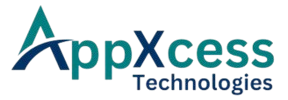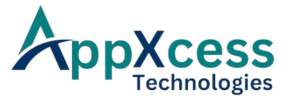In the fast-paced world of gaming and animation, efficiency is key. As projects grow in complexity and scale, managing the production pipeline and ensuring a smooth workflow becomes essential. Streamlined workflows are crucial for optimizing time, improving collaboration, and delivering high-quality content on time. Whether you're working on a video game, animated film, or interactive experience, adopting streamlined workflows can lead to faster production times, enhanced creativity, and better team coordination.
1. Integrated Development Tools
One of the most effective ways to streamline workflows in gaming and animation is through the integration of development tools. By using unified platforms that combine various aspects of production—from 3D modeling to rendering and coding—teams can work more efficiently and reduce the time spent switching between different software. Tools like Unreal Engine, Unity, and Blender are prime examples of platforms that offer comprehensive solutions for animation and game development in a single environment.
These platforms allow teams to collaborate in real-time, making it easier to iterate on ideas and see immediate results. Integrated development tools also reduce the risk of errors that can occur when assets are passed between different software programs, ensuring that all elements of the project work seamlessly together.
2. Cloud-Based Collaboration
As the demand for remote work and collaboration grows, cloud-based solutions have become indispensable for gaming and animation studios. Cloud platforms enable team members to access and work on projects from anywhere in the world, making collaboration easier and faster than ever before. Artists, designers, and developers can upload their work, share feedback, and make real-time changes without being in the same physical location.
Cloud-based tools like Shotgun, Frame.io, and Google Drive allow teams to manage assets, track revisions, and organize project data efficiently. With version control and easy access to all assets, studios can reduce the time spent on managing files, improving productivity and ensuring that the team stays on the same page throughout the production process.
3. Automation and AI-Assisted Workflows
Automation is a powerful tool for speeding up repetitive tasks in animation and game development. Whether it’s generating procedural content, automating character rigging, or applying standard animation techniques, automating manual processes frees up artists and developers to focus on more creative aspects of the project.
AI-assisted workflows are also becoming more common, allowing machines to assist in tasks such as facial animation, lip syncing, and environment design. With machine learning algorithms, AI can analyze large datasets and generate realistic animations or even suggest creative enhancements based on patterns it has learned. This significantly reduces production time and allows for more complex and realistic results.
4. Real-Time Feedback and Collaboration
Feedback is a crucial part of the creative process in gaming and animation. In traditional workflows, feedback loops can be slow and inefficient, with team members having to wait for the next meeting or review session to discuss changes. Real-time feedback and collaboration tools help eliminate this bottleneck by allowing teams to provide instant input on designs, animations, and gameplay.
Platforms like Slack, Miro, and Trello facilitate communication and real-time feedback, ensuring that everyone on the team is aligned and aware of the latest developments. For example, in animation, directors can review a sequence and leave notes directly in the software, which animators can address immediately. In game development, developers can tweak gameplay mechanics or character design in real-time based on player feedback or team suggestions.
5. Streamlined Asset Management
Asset management is a critical aspect of animation and game development, as teams work with thousands of assets—such as 3D models, textures, sounds, and animations—over the course of a project. Without a well-organized system in place, tracking and retrieving assets can become time-consuming and chaotic.
Modern asset management systems help streamline this process by organizing and categorizing assets in a centralized location. Tools like Maya’s Asset Management or Unreal Engine’s Content Browser allow teams to easily search for and reuse assets, ensuring that all project elements are stored efficiently. These systems also ensure that every asset is version-controlled, so no one is working with outdated or incorrect files.
6. Modular Design and Reusable Assets
Modular design is a strategy that allows developers and animators to create reusable assets that can be easily adapted for different parts of the project. This approach significantly reduces the amount of time spent creating new assets from scratch and enables more efficient workflows.
For example, in game development, reusable character models, textures, and animations can be customized to create a variety of different NPCs (non-playable characters) or objects, reducing the need for additional design work. In animation, modular character rigs and animation templates can be reused across multiple scenes, ensuring consistency and saving time.
7. Streamlining Quality Control with Automated Testing
Quality control is an essential part of the production process, especially in game development, where bugs and glitches can have a significant impact on the user experience. Automated testing helps streamline this process by running tests on gameplay mechanics, animations, and interactions to identify potential issues before the final product is released.
Tools like Unity’s automated testing system or Unreal Engine’s automated QA (Quality Assurance) framework allow developers to quickly identify and fix bugs or errors, reducing the amount of time spent on manual testing. Automated testing not only improves efficiency but also ensures a more polished final product, as developers can focus on resolving issues early in the development cycle.
Conclusion
Streamlined workflows are critical for achieving faster production times, enhancing creativity, and improving team collaboration in the gaming and animation industries. By integrating advanced tools, cloud-based solutions, automation, and effective project management systems, studios can reduce inefficiencies and focus on creating high-quality content. As the demand for faster, more dynamic gaming experiences and immersive animated stories increases, adopting streamlined workflows will become more important than ever in delivering exceptional results.
At AppXcess Technologies, we help gaming and animation studios implement efficient workflows that enhance productivity and ensure seamless collaboration across teams. Our cutting-edge solutions and expertise allow creators to focus on what they do best—bringing their visions to life.
© AppXcess Technologies 2025. All Rights Reserved.

